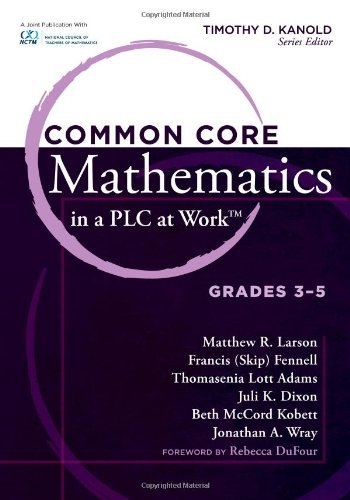How do you help your students demonstrate mathematical proficiency toward the learning expectations of the Common Core State Standards (CCSS)? This teacher guide illustrates how to sustain successful implementation of the CCSS for mathematics for grades 3-5. Discover what students should learn and how they should learn it at each grade level, including deep support for the unique work for Number & Operations--Fractions in grades 3-5 and learning progression models that capstone expectations for middle school mathematics readiness. Comprehensive and research-affirmed analysis tools and strategies will help you and your collaborative team develop and assess student demonstrations of deep conceptual understanding and procedural fluency. You'll also learn how fundamental shifts in collaboration, instruction, curriculum, assessment, and intervention can increase college and career readiness in every one of your students. Benefits - Discover the five essential paradigm shifts necessary to implement the CCSS for mathematics. - Receive guidance on forming and sustaining collaborative teams in a Professional Learning Community at Work culture. - Develop a 'less is more' content mind-set: fewer standards will result in the opportunity of time needed for deeper rigor and conceptual understanding work with students. - Gain helpful formative assessment strategies for development of student proficiency in the Standards for Mathematical Practice. - Access dozens of tools, activities, examples, resources, and reproducibles to help teachers and teams analyze, interpret, and implement the common core standard expectations for instruction and assessment. - Examine the research-affirmed foundation of mathematics content and process standards from 1989 to 2010 and deepen your understanding of the common core expectations.
Authors
Matthew Larson
Additional Info
- Publisher: Solution Tree
- Format: Perfect Paperback
- ISBN: 9781936764006
No copies of this item are currently available.
